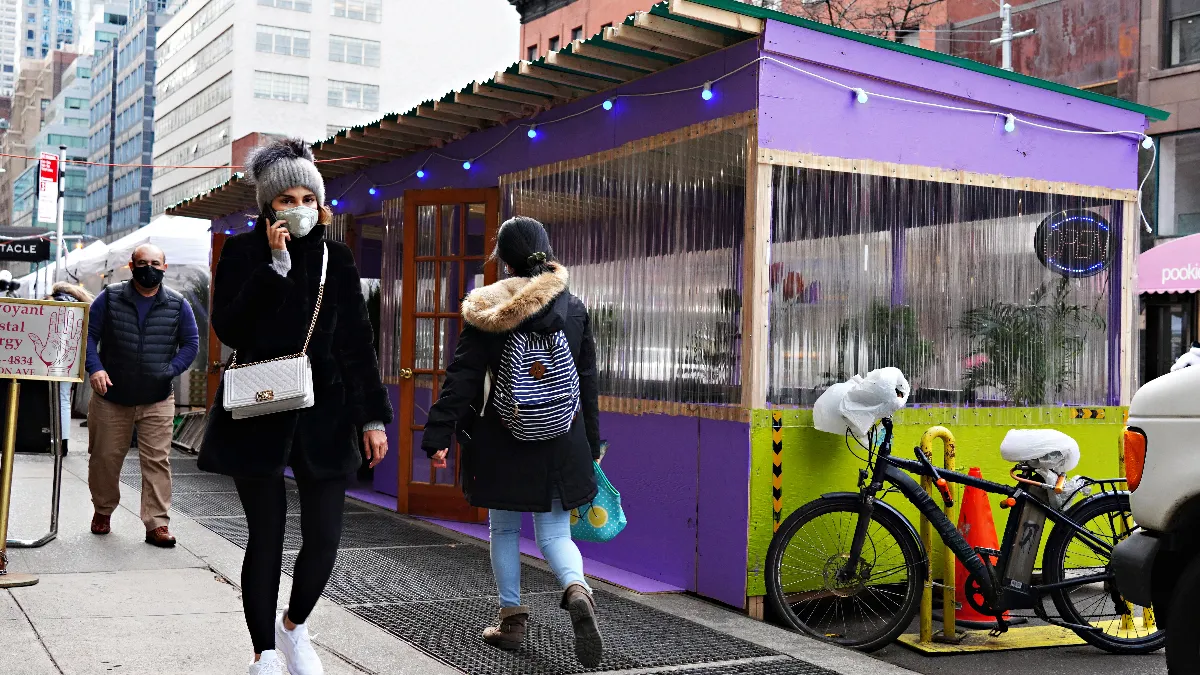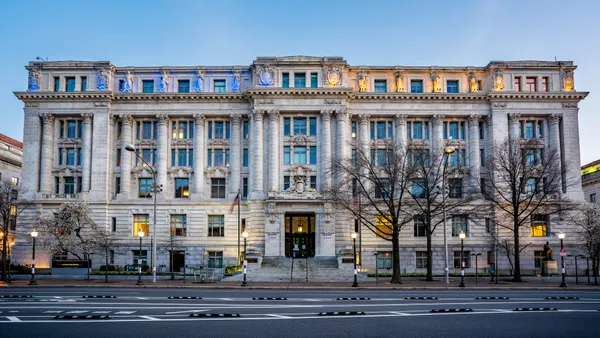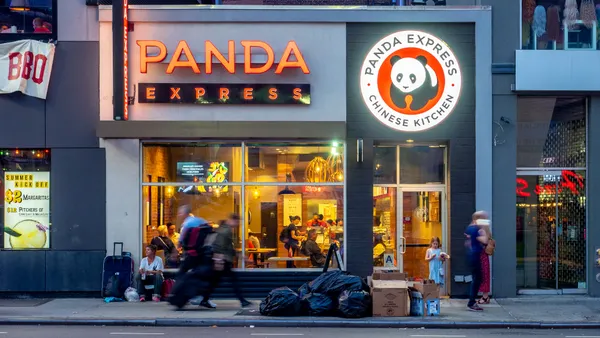Dive Brief:
- Restaurants and neighborhoods that participated in New York City’s Open Streets program, in which streets were closed to accommodate outdoor seeing, performed better than those that did not, according to a New York City Department of Transportation report released Tuesday.
- Open Streets corridors reported an average of 19% higher taxable sales compared to pre-pandemic levels, whereas businesses in non-Open Street coordinates saw sales fall 29% from March 1, 2020 to Aug. 31, 2021.
- This report comes as the city seeks to make establish a permanent Open Restaurants program, which is expected to launch 2023.
Dive Insight:
In the first three months of the pandemic, citywide taxable sales from bars and restaurants dropped over 50% (70% in Manhattan) since restaurants were not allowed to offer outdoor seating. This trend changed once Open Streets launched in June 2020, according to the report.
For example, in Astoria, Queens, Open Streets restaurants reported a taxable sales increase of 44% compared to pre-pandemic, while a nearby area in Astoria used as a statistical control reported a 7% decline in sales. Even within Open Streets corridors, however, performance varied, with Open Streets areas in Chinatown reporting an 8% decrease, though sales performed better than in the nearby control corridor, which experienced a 31% decline. During the summer 2021, Manhattan’s restaurant and bar taxable sales were down 22% against the pre-pandemic baseline compared to the outer boroughs of Brooklyn and Queens, which were up 6%.
Not only did sales recover more quickly among Open Streets bars and restaurants, but these businesses largely stayed open. Brooklyn Open Streets corridors maintained 88% of their bars and restaurants versus 81% of control corridors, the city found. In Manhattan, the divide is much larger, with Open Streets corridors retaining 86% of food service businesses versus 67% in non-Open Streets areas.
Open Streets areas also saw a 10% uptick in new businesses during the pandemic, while other corridors saw a decrease of 20% in businesses.
“Open Streets is an open [dialogue] about the value of city streets and how best to transform these public spaces at a greater scale, with a diversity of design and management tools, and across more equitable geographies than ever before,” the report said.
Ninety-five percent of restaurant operators surveyed by the NYC Hospitality Allicance said the program was “very important” to the survival of their businesses during the past two years. Over 90% of the 726 surveyed operators also said they believe permanent outdoor dining was “very important” to their businesses’ future.
The push to make outdoor dining permanent has come up against legal challenges, however. A lawsuit filed by the Coalition United for Equitable Urban Policy (Cue-Up) aims to stop the program from becoming permanent because extended outdoor dining was made available during a public emergency, which has long since subsided, according to The New York Times. Keeping it going, Cue-Up said, would be city overreach. Critics also argue that outdoor dining has resulted in additional noise and smells that weren’t there before.
The city has been working to clear abandoned outdoor dining sheds, which the city said represents a small minority of the 13,000 restaurant participants. These sheds were once owned by restaurants that have since shuttered and have become a blight on neighborhoods.












